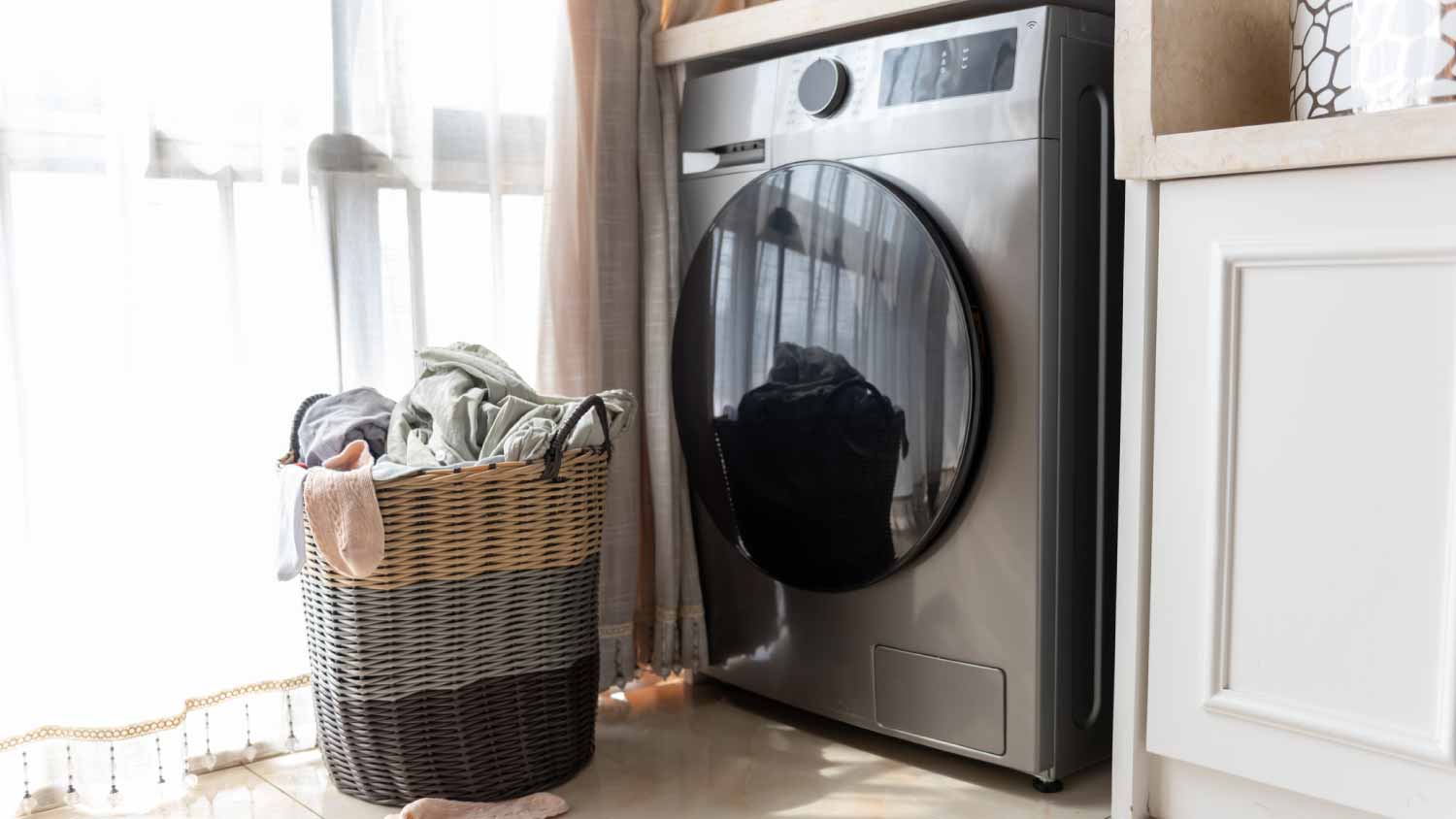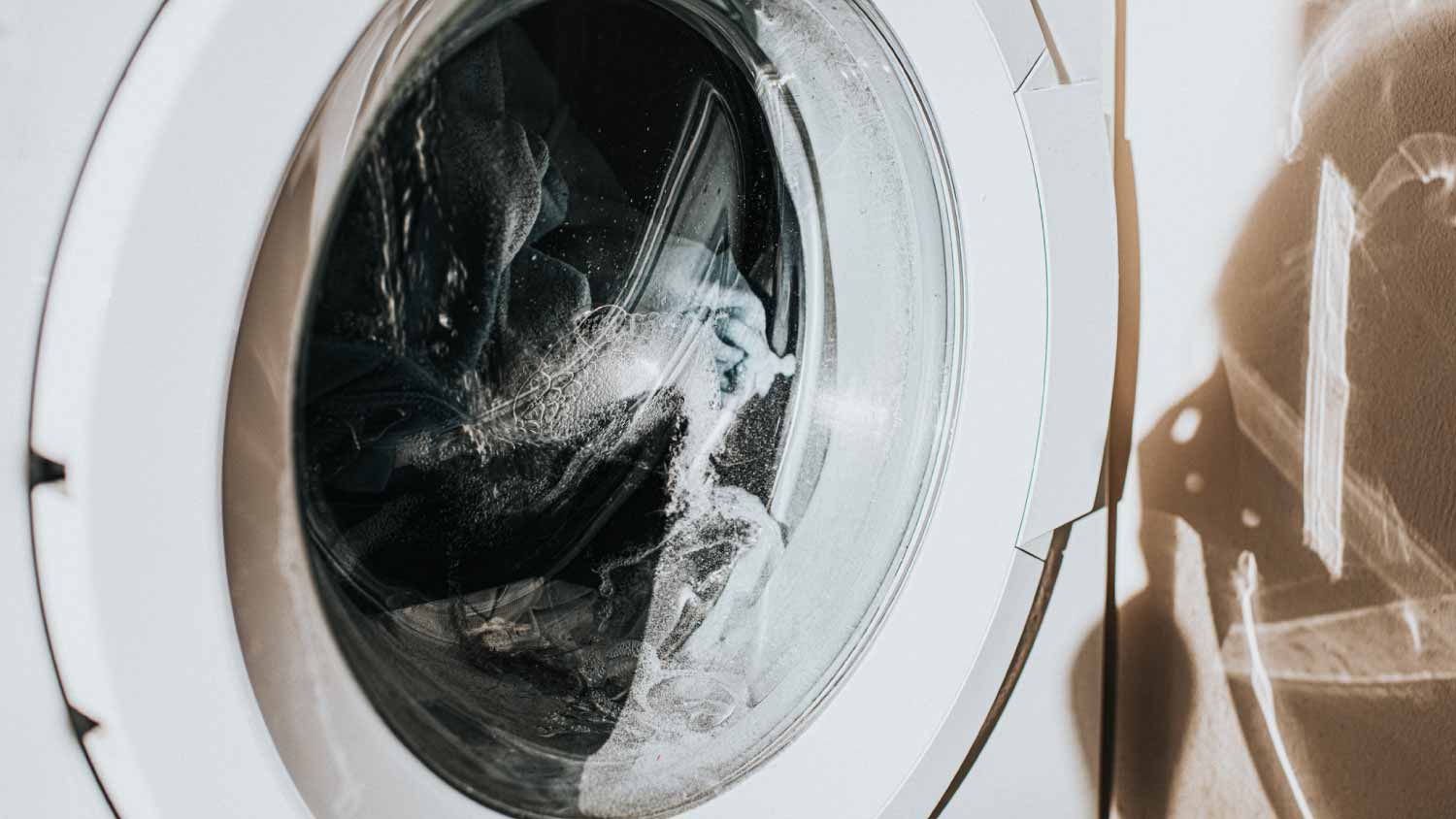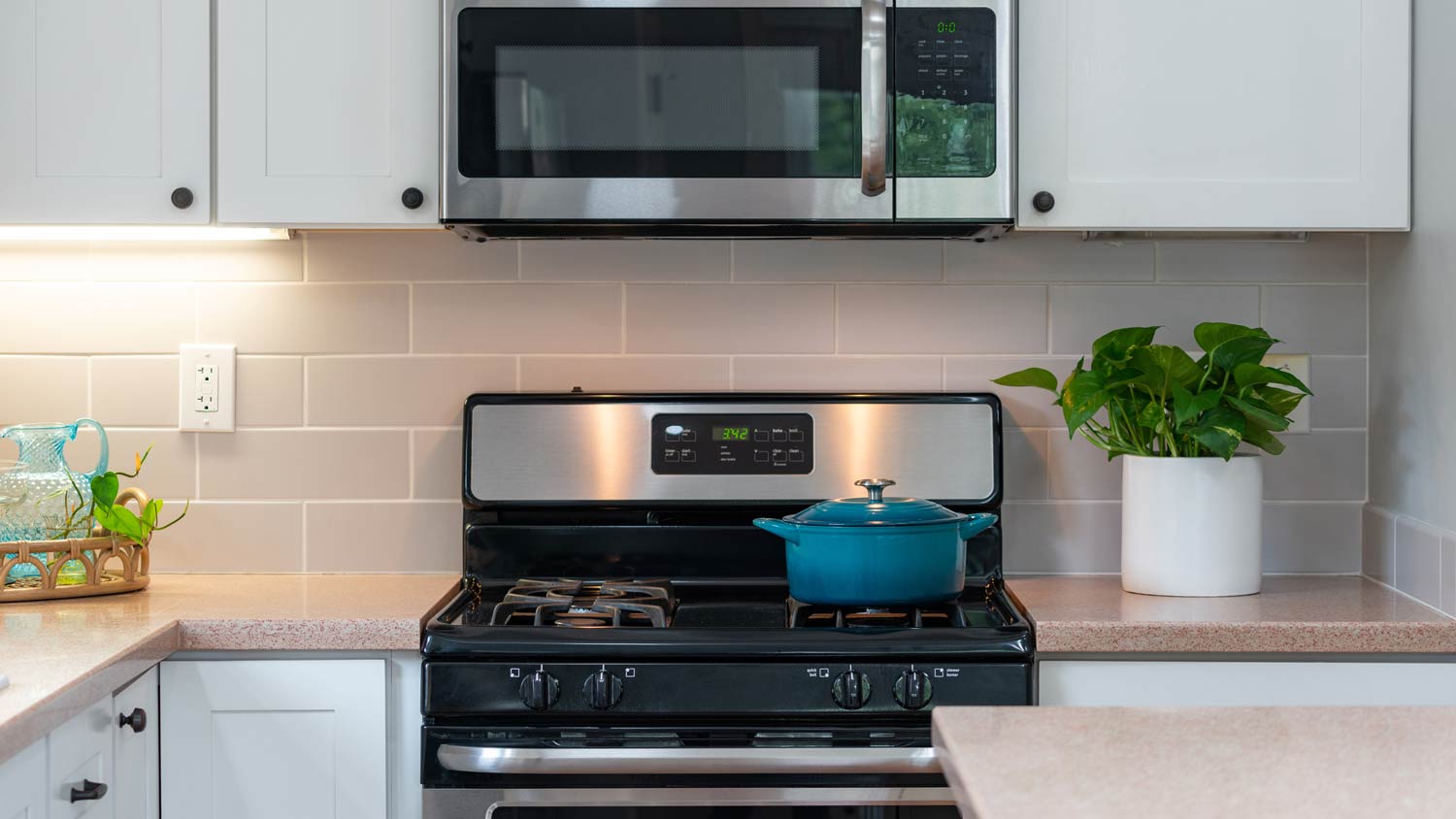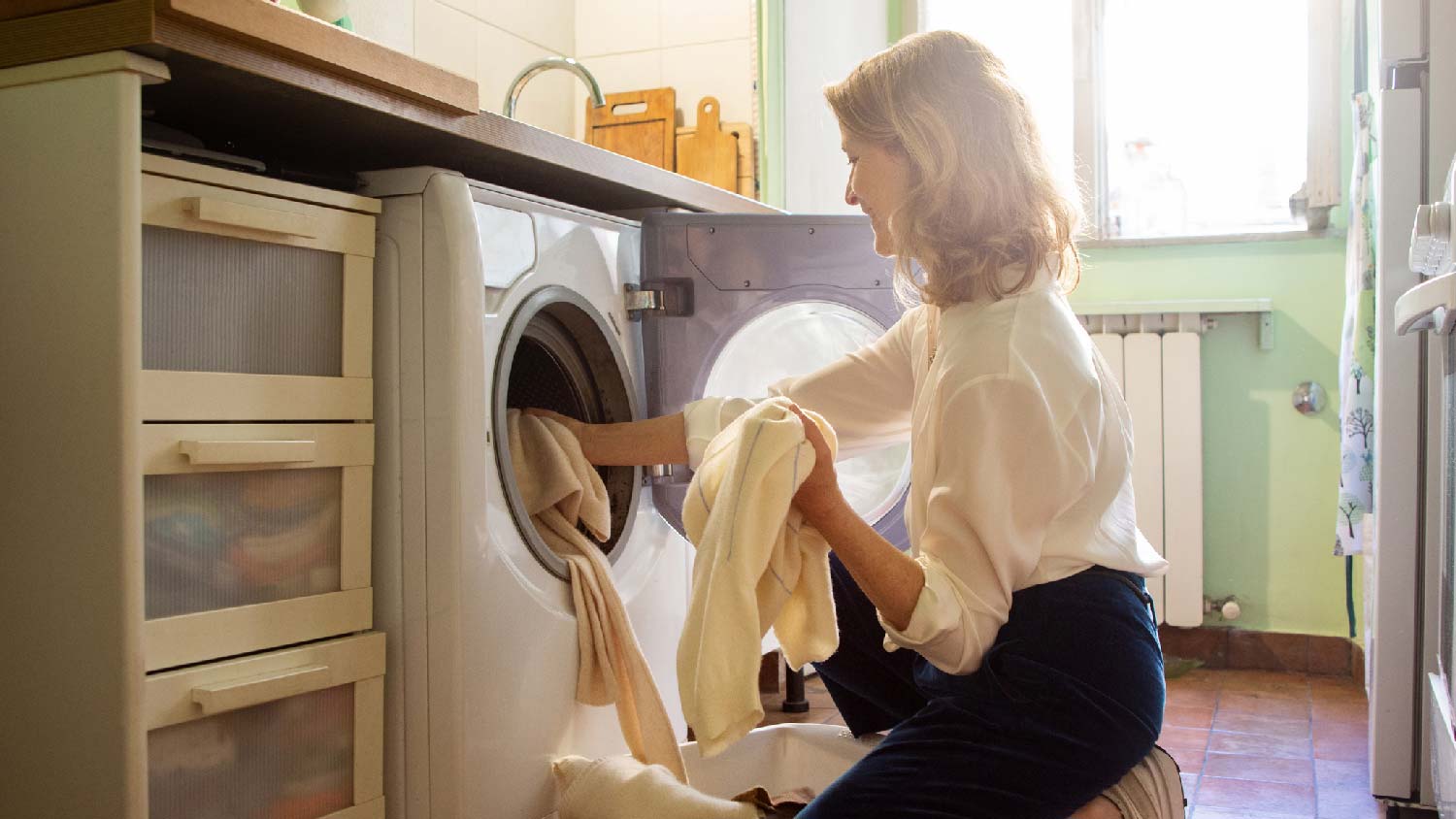8 Reasons Your Garbage Disposal Is Leaking and How to Fix It
Ditch the leak once and for all


Worn or broken seals, clamps, gaskets, and drain lines can cause disposal leaks.
A loose sink flange can make it seem like your disposal is leaking from the bottom.
Always follow safety measures when working with water and electricity.
File a water damage claim if you see signs of mold.
Replace a leaky garbage disposal if it’s over 10 years old.
If you hear the pitter-patter of a leak collecting under your kitchen sink, then your garbage disposal could be leaking from the bottom. Before you have a mold problem on your hands, you'll want to act quickly so that you don’t have to chip in extra for water damage remediation costs. Here are 8 top reasons your garbage disposal is leaking from the bottom and ways for you to fix the problem fast.
To reduce the risk of water damage caused by faulty appliances, make it a habit to check for signs of dampness, mold, and pooling water monthly.
1. Worn Internal Seals
Garbage disposal units contain seals that keep leaks at bay. This seal is typically made using plumber’s putty, and it secures elements of your disposal together, like the flange. Over time, however, the seals inside your garbage disposal will wear out. When this happens, water in the sink can slip into your garbage disposal and leak out from the bottom.
How to Fix It:
If you have worn internal seals in your garbage disposal, then you might not want to fix it at all. That’s because, if one seal is deteriorated, there is a good chance that more seals are deteriorating or have already deteriorated. Consider the age of your garbage disposal when factoring in whether you should replace it. A newer model may just need a little bit of additional plumber’s putty, but a model that’s five years or older could have more problems.
2. Worn Rubber Gasket
In between the disposal’s seal and your sink flange lies a rubber gasket. As with any rubber material—which naturally deteriorates over time—this gasket can become worn down from frequent use or after around five years. When the rubber gasket wears out, water can start to leak and drip out from the bottom of your garbage disposal.
How to Fix It:
With your flashlight in hand, loosen the drain pipe to access the rubber gasket inside it. If the gasket is in poor condition, replace your gasket with a compatible replacement part, then secure the drain pipe back where it belongs.
3. Loose Metal Clamp

Not all garbage disposal leaks originate from the bottom of the disposal. Leaks coming from the sides of your garbage disposal could be a sign that you have a loose metal clamp on hand. The drain lines connected to your garbage disposal unit contain this metal clamp to secure the drain lines that connect your disposal to the sink or dishwasher.
How to Fix It
Rule out a loose metal clamp by tightening the screws before you go out and purchase new drain line materials. If the metal clamp is not secure, you can quickly fix the problem by either tightening the screws connecting the clamp using a screwdriver or by replacing a broken clamp.
4. Loose Drain Lines
Garbage disposals have two drain lines that connect the disposal to your kitchen setup. One of the drain lines connects your dishwasher to the disposal so that food particles can drain into the disposal. The other drain line removes waste that enters your garbage disposal so that it can enter the sewer system.
How to Fix It
If you can see signs of deterioration in the drain lines, then you'll need to invest in a new drain line. While you're inspecting the drain lines connected to the disposal, make note that the smaller drain line is for the dishwasher, while the larger drain line is for the sewer disposal. You'll need to choose the correct measurements when replacing a drain line to ensure that your garbage disposal has the correct sizes, or you'll continue to experience leaks.
5. Defective Sink Flange
A leaky garbage disposal may not be what meets the eye. Sometimes, it's actually your sink causing the leak. If you have a defective sink flange, then this metal piece that goes inside the drain of your sink could be leaking water. When the water leaks around the sides of the flange, it can flow down to the disposal and look like your disposal is leaking from the bottom.
How to Fix It:
If the plumber's putty that secures your sink flange has deteriorated, or the bolts securing the flange under your sink have come loose, you can easily remedy the issue and stop the leak.
For loose bolts, tighten the bolts using a screwdriver. Repairing deteriorated putty requires a little more TLC. You’ll need to disconnect the garbage disposal, loosen the flange’s bolts with the screwdriver, unfasten the clamp, take the flange out of the sink, remove the old putty, apply fresh, new putty, press the flange back into the sink, then reassemble your garbage disposal.
6. Corrosion
Corrosion most commonly affects metal in frequent contact with water, especially in the presence of salt. As you can imagine, a garbage disposal is a perfect candidate for corrosion to occur. The tiny metal pieces in the motor and grinders are usually the first to rust. However, leaks allow water in places it wouldn’t normally be, so there could be corrosion anywhere in the system.
How to Fix It
Check the unit for any visible rust. If you find any, you can DIY its removal with an acidic solution (vinegar works). If the rust buildup is substantial or has infiltrated interior parts, you should call a pro. Most garbage disposal parts aren’t very expensive, so it’s likely they’ll swap out the affected pieces.
7. Impeller (Blade) Damage
These don’t resemble fan blades or helicopter blades—they’re usually two pieces that force food to break up in a grind plate. These blades, called impellers, frequently break as they are the part that endures the greatest abuse. The impellers themselves are inexpensive to repair, but due to safety concerns, we recommend you let a pro do it.
How to Fix It
Call a pro. Impellers are meant to pulverize food. They do a great job of this, but you want to make sure they only come into contact with food. A professional would be able to switch them out in under an hour, saving you time and headache.
8. Cracked Housing
There are many moving parts in a garbage disposal. Leaks can come from housing that’s cracked due to heavy or improper use or lack of routine maintenance. If the garbage disposal is nearing the end of its lifespan (around 10 years) and starts leaking, check for cracks around the entire unit.
How to Fix It
Cracks commonly form around the motor and seals, so check there first. You can try to repair the crack with epoxy, but it’s only a bandaid and likely won’t last. An older garbage disposal is more likely to have a cracked housing, and the problem usually requires a full replacement.
When to Call a Pro for a Garbage Disposal Leak
There are a few issues you can DIY, such as tightening some screws or replacing a seal. However, for bigger issues like a cracked housing or worn/broken blades, you need to call a pro. Like with any project, anything electrical shouldn’t be done yourself due to safety risks. Talk to a local plumbing repair pro to gather quotes and discuss your options.
How to Prevent Garbage Disposal Leak Damage
Whether you fixed your leaking garbage disposal or you've installed a new one and want to stop leaks from happening in the first place, having a solid maintenance plan can help prevent leaks from sneakily wreaking havoc on your beloved kitchen.
Reduce the risk of damage from garbage disposal leaks by checking for dampness, mold, and pooling water on a monthly basis. It’s also a good idea to inspect your refrigerator, washing machine, bathroom sinks, and dishwasher for leaks as part of a comprehensive maintenance checklist. Lastly, learn how to check for mold to take action if you do find yourself with a leaky appliance.
Allie Ogletree contributed to this piece.
Frequently Asked Questions
If the cost of repairing a leaking garbage disposal is close to the cost of replacing the disposal, then fixing the unit might not make sense. When deciding if you should repair or replace your garbage disposal, consider the age of your garbage disposal, the cost of the repair, and whether your garbage disposal has had other problems recently to help you decide if the cost of repairing the leak is better than the cost of replacing the disposal.
Garbage disposals can last between 10 and 12 years, so if your unit is pushing its lifespan, it may be a good idea to replace it. If your unit isn’t approaching the 10-year mark, try investigating other parts of the disposal to see if there's an affordable repair on the horizon. For example, rubber has a shorter lifespan than 10 years, connections and hoses loosen over time, and sink flanges can cause leaks that have nothing to do with disposals.
Replacing a garbage disposal costs anywhere from $150 to $950, but the average cost is somewhere around $550. There are two types of garbage disposal units, and continuous feed disposals tend to cost more than batch feed disposals. Going for an aluminum garbage disposal is also significantly cheaper than choosing a stainless steel garbage disposal. You'll also need to factor in the horsepower of the motor, labor, and the removal and disposal of your old unit.





- Appliance Repair Companies
- Washing Machine Repair
- Dryer Repair
- Refrigerator Repair
- Dishwasher Repair
- Oven Repair
- Wood & Pellet Stove Repair
- Freezer Repair Services
- Wood Stove Services
- Gas Stove Repair
- Emergency Appliance Repair Companies
- Ice Maker Repair
- Gas Appliance Repair
- GE Appliance Repair
- GE Refrigerator Repair
- GE Dryer Repair
- GE Dishwasher Repair
- GE Washing Machine Repair
- Samsung Appliance Repair
- Samsung Refrigerator Repair
- Samsung Dryer Repair
- Samsung Washer Repair
- Samsung Dishwasher Repair
- Samsung Oven Repair
- Whirlpool Repair
- Whirlpool Refrigerator Repair
- Whirlpool Washer Repair
- Whirlpool Dryer Repair
- Whirlpool Oven Repair
- Maytag Appliance Repair
- Maytag Refrigerator Repair
- Maytag Washer Repair
- Maytag Dryer Repair
- Maytag Dishwasher Repair
- Kitchenaid Appliance Repair
- Kitchenaid Oven Repair
- Kitchenaid Refrigerator Repair
- Kenmore Appliance Repair
- Kenmore Dishwasher Repair
- Kenmore Washer Repair
- Kenmore Dryer Repair
- LG Refrigerator Repair
- Bosch Appliance Repair
- Kenmore Refrigerator Repair
- LG Appliance Repair Services
- GE Microwave Repair
- Electrolux Appliance Repair
- Electrolux Washer Repair
- Kitchenaid Dishwasher Repair Services
- Wood Stove Inspection
- Dishwasher Installation
- Trash Compactor Repair
- Who Installs Garbage Disposals? Here’s Who to Call
- How to Unclog Your Garbage Disposal Quickly and Easily
- How to Install a Garbage Disposal and Remove an Old One
- Garbage Disposal Not Working? Here Are 8 Reasons Why—And Solutions
- 8 Troubleshooting Tips to Keep Handy If You Have a Garbage Disposal
- Who Fixes Garbage Disposals? Here’s Who to Hire
- What Size Garbage Disposal Do I Need?
- When Should I Repair vs. Replace My Garbage Disposal?
- Do You Need a Garbage Disposal for a Dishwasher?
- How Long Do Garbage Disposals Last? Here’s the Average Lifespan




.jpg?impolicy=leadImage)






